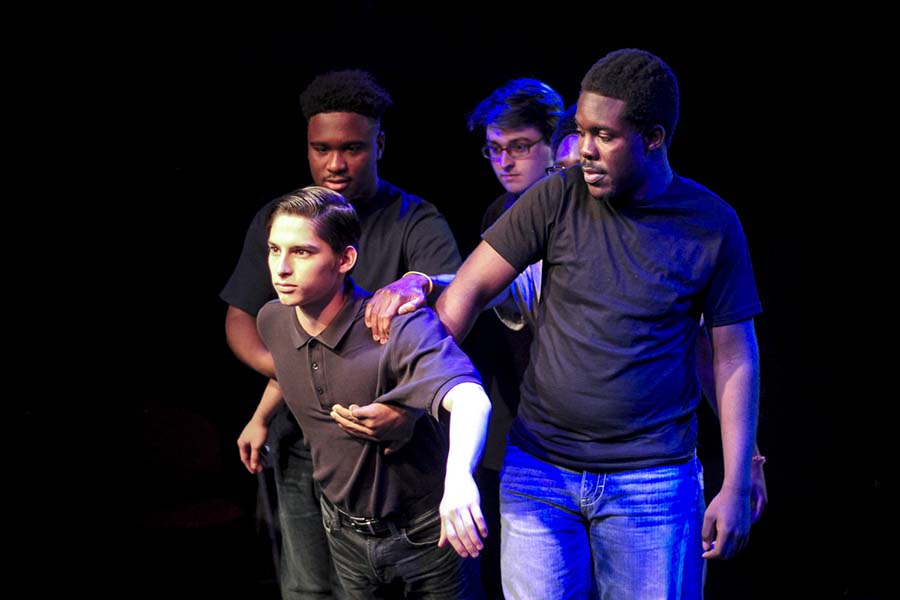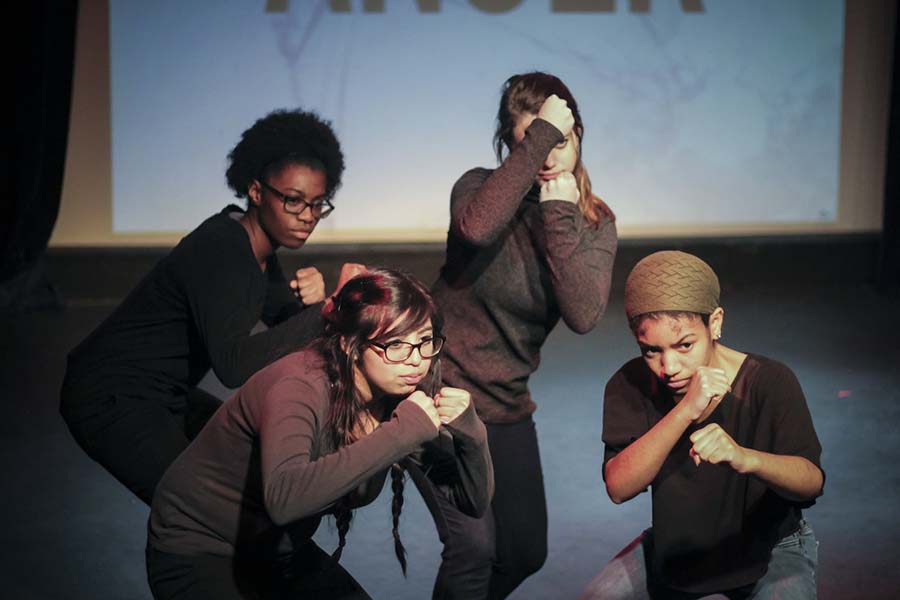Drive down Elm Street, just beyond Dealey Plaza, to find a literal “X” that marks the spot where John F. Kennedy was assassinated more than 50 years ago. The city painted over it, only for it to mysteriously return. In 2013, just before the 50th anniversary, the street was resurfaced once again, but, like all the times before, the X reappeared. The city stopped trying.
On any given day tourists crowd the grassy knoll. They scurry into the busy street, narrowly avoiding blind-spotted cars screaming over the hill to snap a quick photo, a macabre souvenir of the city’s greatest legacy.
Until, that is, on July 7, 2016, Dallas was rocked by a major act of gun violence that would once again draw national attention to the city. That’s they date that Micah Xavier Johnson, an Army Reserve veteran of the Afghan War, ambushed police officers working a peaceful protest rally in downtown Dallas. Following the deaths of Alton Sterling, of Baton Rouge, La., and Philando Castile, of St. Paul, Minn., protests against police violence were popping up throughout the country. The shooting, the deadliest incident for law enforcement since Sept. 11, left 5 officers dead, injuring nine others as well as 2 civilians. Johnson opened fire sometime after 9 p.m. that night and was killed by a robotic explosive device around 3:30 a.m. after a standoff.
It is hard to overstate the attack’s impact on the city. President Obama traveled to Dallas for the officers’ memorial service just five days after the shooting, and presided over a bipartisan gathering that included former Dallas Police Chief David Brown, Dallas Mayor Mike Rawlings, and former President Bush—a moment of unity that seems almost unimaginable in this country just a year later. Outside the memorial, the Dallas Arts District and nearby Klyde Warren Park were packed. Just next door, in stations outside the Winspear Opera House, national and local media set up shop, and two fire trucks hoisted an American flag high above crowds of police and civilians alike.
On the night of the attack, Mara Richards Bim, artistic director of Cry Havoc Theater Company, was sitting in on the final dress rehearsal for Naomi Iizuka’s Good Kids with her company, all teenagers. Though Richards Bims, who had given birth the week before, had no plans to come back into work the next day, she knew she had to be there to lead a conversation with the kids about the attack. She had started Cry Havoc to give teens a platform to explore issues and events weighing on them, and got her first real taste of those issues on the night of the shootings. The young actors, overwhelmed, needed to unpack the trauma in ways that made sense to them.
Cry Havoc is relatively new to the Dallas theatre scene, but Richards Bim is not. A North Texas native, she graduated from NYU’s Tisch School of the Arts, worked in fundraising in such New York theatres as MCC Theater, then crossed over into theatre education at New Victory Theater. In 2012, she returned to Texas to manage the education programs at Dallas Theater Center.
The way the kids of Cry Havoc processed the aftermath of the July shooting was to work throughout the fall of 2016 on a documentary-style devised-theatre piece titled Shots Fired, which premiered in January 2017. To create the piece, Richards Bim, codirector Ruben Carrazana, and the actors tracked down as many people as they could find to interview about the night of the shooting: police officers, community members, therapists, Black Lives Matter supporters, and Blue Lives Matter folks as well. The company is currently remounting the show, in a coproduction with Dallas’s Kitchen Dog Theater, to commemorate the one-year anniversary of the shooting.
Among the interviewees were three key players: Dr. Brian Williams, the lead trauma surgeon on call that night at Parkland Memorial Hospital; Shetamia Taylor, a civilian who was shot; Mark Hughes, a man participating as an “open-carry” member of the protest who was for a time wrongly identified as the lead suspect. All three will return for the remount and participate in a panel discussion on July 13.
The teen actors kept meticulous records of the interviews; not only was each conversation audio recorded, so was a “debriefing” conversation with the actors. From these transcripts Shots Fired was born. Basing much of the structure on Tectonic Theater Project iconic The Laramie Project, Richards Bim and Carrazana helped the kids weave the interviews into a full production. The young actors portrayed 25 characters through a series of short scenes.

I first spent time with the cast on a frigid Saturday in December last year, one day into their school holiday breaks. The group of young adults sat reverently in a circle unpacking a long, emotional day of interviews. My first question to them was to ask if they first learned about the shooting from Facebook. I was not the first adult to underestimate this astute group. Scarlett said no—she heard gunfire from her home.
“I didn’t think it was gunshots at first,” Scarlett said. “I was very scared. My family is very involved in the downtown community.”
Her best friend, Cara, chimed in. “We had just left rehearsals and went to a restaurant. We saw the footage on TV and talked to the people in the restaurant about it. I had to check on her to make sure she was okay.”
De’Aveyon didn’t find out until he got home and talked to his mom. They sat and watched the news together all night.
Stakiah’s sister was at the protest. Her mother picked her up from rehearsal and they drove to get her sister. Her mom was too upset to even tell Stakiah what was going on at first.
As the kids went around the circle and discussed their experiences of that fateful night, I quickly saw how complicated their feelings are—and how very critical this production was in cultivating a healing process for so many involved.
Richards Bim told me then, “We certainly don’t expect to solve anything. But our young actors (and audiences) are some of the most diverse in town. And they have a lot to say. As one teen put it while sobbing the day after the shootings, ‘The adults are fucking up the world for us.’”
Now, all these months later, Richards Bim reflects on the response and reaction. It was more than she or her kids could have imagined.
“The play begins with the kids milling around and talking,” Richards Bims says. “The room goes dark to the sound of gunshots. Then for 90 minutes you could hear a pin drop. It was stunning. And every single performance was like that.”
A 65-seat house grew to 85, then more than 100 for a standing-room-only closing night. Each night someone who had been present at the shootings attended, and subsequently participated in talkbacks. This turnout and response—and the urging of Kitchen Dog Theater—led Richards Bim to consider the remount.
Dr. Brian Williams, one of the play’s main subjects, says he had no idea what to expect when he first saw the performance: “You know you said the words, but you don’t expect the impact of hearing them said back to you.”
Williams is the only African-American trauma surgeon at Parkland, and the police shootings of black civilians which spurred the protests that night had him similarly incensed. When he started getting pages that multiple gunshot victims were coming to Parkland, it only magnified his emotions. Williams says he was surprised by the teen actors, finding their questions thoughtful and probing. They seemed truly interested in getting to the root of how he felt, he says, though it’s something he’s still working on a year later. “It’s been a long year of grief and recovery,” says Williams.
Shots Fired has given him an unexpected hope for the future. An especially impactful scene involves Williams’s wife, in which “the actor was speaking as me,” says Williams. “It looked like he was talking directly to my wife, saying words I swear I thought I had said to her too, thanking her for all that she’d done to support me. She was crying, and she told me later it was such a gift to know I felt that way.”
Shetamia Taylor, one of the civilians shot by Johnson that night, also says she had no idea what to expect. “I appreciate how they took such initiative to show all the different sides and opinions,” says Taylor. “I really think it helped to open the mindset of different people.”
Taylor says it’s important to emphasize how peaceful the protest rally was. She and her four boys were heading home when they first heard a pop. “We thought it was fireworks,” she recalls. “Gunfire was the furthest thing from our minds.” A nearby officer told them there was a shooter and that they should get down. Taylor and her sons ran, but she’d been hit. She hid between two cars, where an officer wrapped her leg in a tourniquet and stayed with her.
“I’ll never forget his East Texas drawl,” Taylor says. “He was so wonderful. He stayed and reassured us everything was going to be okay.” The bullet shattered her tibia; she now has a metal rod in her leg.
The Cry Havoc kids say that felt the urgency of talking about this, not least because this platform gives them a chance to show that they’re not all social media-addicted zombies. “Adults don’t take us seriously,” is a refrain I hear often from them. Debunking a common misconception, Trinity says they’re more savvy than some assume: “Just because it’s on our phone or on TV doesn’t mean it’s real. We know that. We find information just as easily as adults. Sometimes even more than a lot of adults.”
The rehearsal room, Scarlett says, is a “safe space” where it’s “okay to say something, even if it’s wrong. Adults don’t let us talk.”
For Richards Bim, the success of Shots Fired is an affirmation. So is the large grant that Cry Havoc received from longtime Dallas arts grantor TACA. She says the company will soon begin work on another documentary-style production about gun ownership.
Over 50 years later, a new generation is learning to process trauma in the city of Dallas. For the Cry Havoc teens, there will be no selfies in the street, no conspiracy theories. The sensationalism surrounding the JFK assassination has made that crime scene a tourist stop, but the July 7 attack has prompted dialogue and healing. In a time when the importance of the arts is now hotly disputed, a small Dallas theatre company is leading the way.
Katy Lemieux is a Dallas-based writer covering theatre and the arts.


